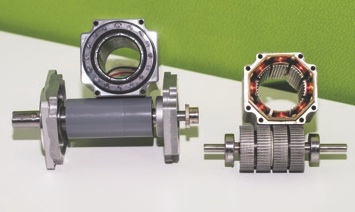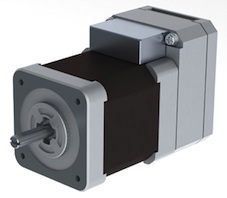Myostat
Choosing The Right Motor
How to match your application requirements with the correct motor.

With so many variables to consider, it is no wonder many designers find it difficult to choose the right motor for their application and often overlook critical parameters along the way. Myostat Motion Control is frequently called upon by our clients to walk them through this, somewhat complicated, spec’ing process.
The first step is to understand what motor options are available for motion control. From DC to AC, brushed to brushless, each motor has its own benefits and drawbacks. This article examines a sampling of the available options and specific parameters designers should consider during the selection process.
When it comes to narrowing down the choices, a designer must consider the specifics of the machine design itself and balance the project budget with desired performance and environmental considerations. The following check list will help to ensure all parameters are considered.
Speed
How fast does the motor need to run? Check the rated or constant speed and maximum or peak speed of the motor you are considering. Can the motor, coupled with a ball screw or gearbox, provide the speed required for your job?
Torque and Inertia
Torque, the amount of rotary force applied by the motor shaft, is another primary consideration. Can the selected motor provide enough torque to move your load? Keep in mind that coupling the motor with a gearbox will help to achieve torque but you must ensure you have enough speed to make them effective. Designers must also consider the weight of the mass they are moving and consider if the motor can handle the acceleration and deceleration of the mass without over-driving the motor. Gearboxes reduce the inertia by the square of the ratio and are often used to combat the inertia from large loads.

Secondary Considerations include:
Size
Is there a size restriction in your application? If you are building a small part, or something where mass is concerned, a large 5 lbs. motor may not be ideal for you. Often times, the space envelope of your design will dictate which motor can be used. You must then look at the speed and torque of motors within that size range.
Communication
How do you plan on sending commands to your motor? Will you need to communicate with multiple motors or be covering large distances between motor and control box? Different motors offer different communication options and add-ons. Motor types also vary from pulse or step/direction type to more advanced methods such as Ethernet.
There are also specific protocols from daisy chaining motors; you can utilize methods such as CAN or serial interfaces for these. Again, if your controller needs to send a specific type of command, this may dictate which motor you choose as not all motors offer all options.
Accuracy and Resolution
How accurate do the motors have to be? Are you measuring minute dimensions with a sensor that requires large amounts of precision? Are you simply moving a large plastic piece from one conveyor to another?
Some motors, usually basic steppers, offer a lower resolution, meaning less steps, pulses or small movements per one revolution of the motor shaft. Servos usually offer a high resolution, offering up to 50,000 pulses per revolution. The finer your move needs to be, the higher the resolution of your motor should be.
Motor resolution does not necessarily equal accuracy and the two shouldn’t be confused. A stepper motor could be driven by a micro stepping drive with a mathematical resolution of 32,000 micro steps per rotation. However, without sensor feedback, the motor itself may not have the right commutation to move such a small step.
Position encoders vary in type and, although they offer a given resolution, internally they may have intrinsic, kinematic error due to inconsistencies in component manufacturing. Optical encoders rely on holes accurately cut in a glass disk and resolvers rely on consistency in the windings as well as the hardware that holds those windings.
The closed loop system of the motor also contributes to accuracy as the tuning parameters affect both speed and position, reaction time and settling location.
Environmental concerns
In what environment will your motor be running? Will there be a large amount of dust, particulate or water coming into contact with the motor. An IP rating will give you an idea of what environment the motor is suited to run in. Some motors are water resistant; others offer shaft seals which help prevent particulates from getting into the inner workings of the motor through the shaft.
Heat
What is the temperature and air flow like in the area the motor is to be placed? Heat is a concern when it comes to operating motors. They often have a specific temperature range at which they should be run. Motors produce heat when running, therefore fully enclosed areas with no air circulation may cause motors to overheat.
Certain motors will only draw the amount of current needed to perform a move or hold position. These motors tend to run cooler as they are not constantly drawing large amounts of current.
Budget
How much are you looking to spend on your motor? Often times, this is the deciding factor. If you can only spend $100, a high-end servo is obviously not the right choice. You should have an idea of how much you are willing to spend and look for a motor accordingly.
Each design is unique and often, one of the factors outlined above will hold more weight in the decision making process. By understanding the motor options available and developing a clear set of project parameters, engineers and machine designers will be able to avoid costly mistakes and ensure that the correct motor is chosen for the job.
This article originally appeared in the September 2012 issue of Design Engineering
Alexa Loiskandl is a sales engineer for Myostat Motion Control Inc. with a B.Eng in Biomedical and Electrical Engineering.
View more information on the Cool Muscle Series of Servo Motors here.